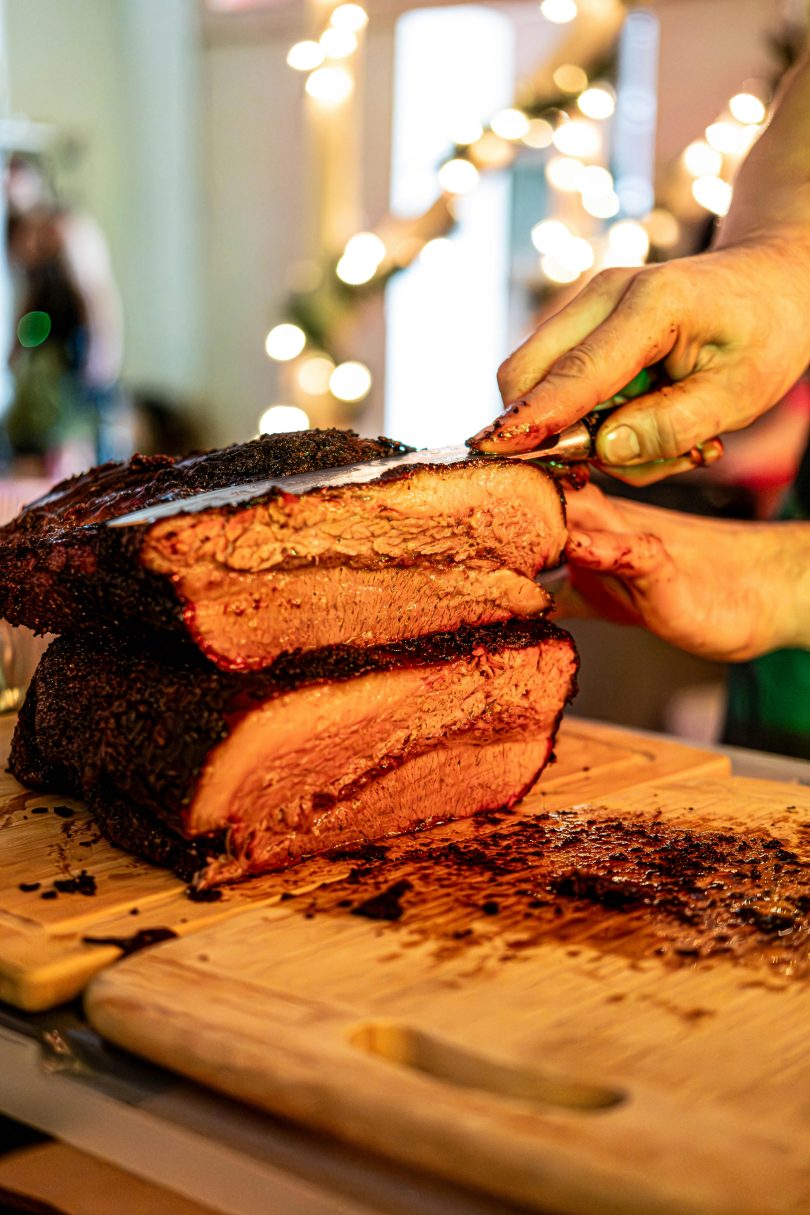Unpacking the Myths: The lies Behind Lab Cultured Fake Meat
As the conversation around sustainability and ethical eating continues to evolve, the lies behind lab cultured fake meat is taking center stage. Promoted as a revolutionary alternative to traditional meat, this innovation has sparked both excitement and skepticism. But what’s real and what’s myth? With numerous claims swirling about its health benefits, environmental impact, and potential role in our diets, it’s time to unpack the lies behind lab-cultured fake meat. Dive into this comprehensive exploration where we’ll separate fact from fiction and uncover the truths that shape this cutting-edge food technology.
the lies behind lab cultured fake meat, also known as cultured or cell-based meat, is produced by cultivating animal cells in a lab setting. This process eliminates the need for raising and slaughtering animals while still replicating the taste and texture of traditional meat.
The cultivation begins with obtaining muscle cells from animals, which are then placed in a nutrient-rich culture medium to grow. Over time, these cells multiply and form muscle tissue that can be harvested for consumption.
This innovative approach aims to address ethical concerns related to animal farming and reduce environmental impacts associated with conventional meat production. As awareness grows, lab-cultured fake meat presents an intriguing alternative for many consumers seeking sustainable choices.
How Lab-Cultured Fake Meat is Made
Lab-cultured fake meat begins with a small sample of animal cells, often taken from living animals through a harmless biopsy. These cells are then placed in a nutrient-rich medium that simulates the conditions found in the body, allowing them to multiply and grow.
As the cells proliferate, they form muscle tissue similar to what you’d find in traditional meat. Bioreactors maintain optimal temperature and pH levels for cell growth, ensuring healthy development throughout the process.
After a few weeks, this cultivated muscle tissue can be harvested. The final product undergoes various processing steps to enhance texture and flavor before being packaged as lab-grown meat ready for consumption.
Pros and Cons of Lab-Cultured Fake Meat
Lab-cultured fake meat offers numerous advantages. It presents a potential solution to the ethical concerns surrounding animal farming. By reducing dependence on livestock, we can decrease animal cruelty and promote more humane food production.
On the downside, lab-cultured meat faces skepticism regarding its nutritional profile. Some consumers worry it may lack essential nutrients found in traditional meat products. Additionally, there are concerns about how these artificial meats might affect health long-term.
Cost is another factor to consider. Currently, producing lab-grown meat remains expensive compared to conventional options. As technology advances and efficiencies improve, prices may decrease but for now, affordability poses a challenge for widespread adoption.
Dietary Considerations: Vegetarians, Vegans, Halal, and Kosher
the lies behind lab cultured fake meat has raised questions about whether it is suitable for specific dietary restrictions. For vegetarians and vegans, the ethics of consuming meat may be a concern, regardless of how it is produced. However, as lab-cultured fake meat does not require the offers a unique opportunity for vegetarians and vegans. It mimics the taste and texture of traditional meat without harming animals. However, opinions vary within these communities about its ethical implications.
For those observing halal or kosher dietary laws, lab-grown meat presents challenges. The sourcing of cells must comply with religious guidelines to be acceptable. Certification processes are ongoing to determine whether these products can meet such standards.
As consumer interest grows, manufacturers are becoming more aware of diverse dietary needs. This evolution may lead to options that cater specifically to different beliefs and practices in the near future.
Regulatory Landscape: EU Approval and FDA Status
The regulatory landscape for the lies behind lab cultured fake meat is still evolving. In the European Union, the European Food Safety Authority (EFSA) has issued an opinion stating that lab-cultured meat is safe for consumption.is evolving rapidly. In the European Union, products must undergo rigorous safety assessments before approval. The European Food Safety Authority (EFSA) evaluates both the production process and nutritional content to ensure consumer safety.
In the United States, the FDA plays a significant role as well. the lies behind lab cultured fake meat is currently not available for sale in the US, but regulatory agencies are actively exploring how to classify and regulate these products. falls under their jurisdiction, requiring extensive review processes to confirm its safety for human consumption. Companies often submit detailed data on ingredients and manufacturing methods.
Both regions are focused on public health. As demand grows, regulations will likely adapt alongside advancements in technology to keep pace with this innovative food sector.
Potential Impact: Will Lab-Cultured Fake Meat Replace Traditional Meat?
the lies behind lab cultured fake meat is still in its infancy, but it has the potential to revolutionize the food industry. It offers a sustainable and ethical solution to traditional meat production that may appeal to a broad spectrum of consumers. presents an intriguing alternative to traditional meat, but its potential to replace it entirely remains uncertain. Consumers’ willingness to adopt lab-grown options is crucial. Many are still hesitant due to misconceptions about taste and nutritional value.
Moreover, production scalability poses a challenge. While advancements in technology may lead to cost reductions, current prices remain high compared to conventional meat. This disparity could hinder widespread acceptance.
Cultural preferences also play a significant role in this transition. For some communities, traditional farming practices hold deep-rooted significance that lab-grown alternatives might not fulfill. As consumer education increases, the future landscape of our diets will evolve accordingly.
Addressing Critics and Advocates’ Perspectives
Critics of the lies behind lab cultured fake meat question its necessity and environmental impact. They argue that plant-based diets are a more sustainable option and that the resources needed for lab-grown meat production could be better utilized elsewhere. often raise concerns about its nutritional profile and the potential long-term health effects. They argue that reliance on synthetic processes might lead to unforeseen consequences for consumers.
On the other hand, advocates highlight the benefits in terms of animal welfare and reduced environmental impact. They emphasize that this technology can significantly lower greenhouse gas emissions compared to traditional meat production.
Additionally, there is a growing belief among supporters that the lies behind lab cultured fake meat has the potential to address global food security. As the population continues to grow, traditional meat production methods may struggle to meet demand. Lab-grown alternatives could offer a solution to this issue.could address food security issues by providing sustainable protein sources without depleting natural resources. This debate continues to evolve as more research emerges on both sides.
Market Dynamics and Cost Factors
The market for the lies behind lab cultured fake meat is still developing. Currently, the high cost of production means that it remains out of reach for many consumers. However, as technology advances, costs are expected to decrease, making lab-grown meat more accessible. is evolving rapidly. Increased investment from startups and established food companies has spurred innovation. This competition drives costs down, making products more accessible to consumers.
Production methods also impact pricing. Techniques like bioreactor cultivation help streamline processes but still require significant resources. As technology advances, economies of scale are expected to further reduce expenses.
Consumer demand plays a crucial role in shaping the market landscape. Health-conscious individuals and environmentally aware consumers fuel interest in sustainable alternatives. As awareness grows, so does acceptance, paving the way for greater mainstream adoption of lab-cultured meats.
Sustainability Comparison with Traditional Meat Production
Lab-cultured fake meat presents a promising alternative to traditional meat production in terms of sustainability. It requires significantly less land and water, reducing the strain on natural resources. With fewer inputs needed, this method can alleviate some environmental pressures associated with livestock farming.
Moreover, lab-cultured meats produce lower greenhouse gas emissions compared to conventional meat production. The reduction in methane releases from ruminant animals contributes positively to climate change mitigation efforts.
Additionally, as technology advances, the energy efficiency of lab-grown processes is expected to improve further. This could lead to even more sustainable practices that align closely with global goals for reducing carbon footprints and promoting eco-friendly food sources.
Future Outlook and Challenges
The future of lab-cultured fake meat is both promising and complex. As technology advances, production techniques could improve efficiency and reduce costs. This would make lab-grown options more accessible to the general public.
However, significant challenges remain. Consumer acceptance varies widely across demographics, influenced by cultural beliefs and perceptions about artificial foods. Education will play a crucial role in addressing skepticism around these products.
Additionally, regulatory hurdles continue to pose obstacles for companies seeking market entry. Ensuring safety standards while navigating legal frameworks requires careful planning and collaboration among stakeholders in the industry.
References
Lab-cultured fake meat is a burgeoning sector in the food industry, promising to revolutionize how we produce and consume protein. While it faces skepticism and criticism, ongoing advancements are addressing these concerns. The balance of sustainability, ethics, and dietary inclusivity remains pivotal as society navigates this transition.
As the market grows and technology improves, lab-cultured meat could play an essential role in meeting global food demands without compromising ethical standards or environmental integrity. Continuous dialogue among critics and advocates will shape its future—potentially leading to greater acceptance.
– Lab-Grown Meat: Is It The Future Of Sustainable Food? (https://www.forbes.com/sites/johncumbers/2020/02/13/lab-grown-meat-is-it-the-future-of-sustainable-food/?sh









